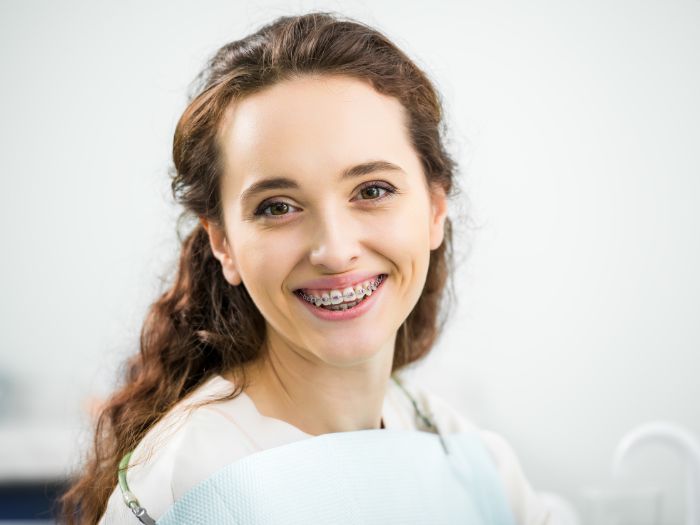Jaw misalignment and overlapping or shifting teeth may be reasons to get braces later in life. Today’s options are diversified, from traditional metal braces to clear aligners.
Understand why an adult might choose one of these dental devices.
Several Options for Straightening Teeth
Design and technology have evolved over the past few decades, resulting in multiple solutions to straighten a person’s teeth:
- Metal braces use brackets and glue to apply consistent, steady pressure to the teeth. Traditional braces remain ideal for jaw issues and visibly misaligned teeth.
- Clear braces add ceramic brackets and wires to apply pressure without drawing attention to the orthodontic device.
- Clear aligners like Invisalign®, use a series of trays for nine to 15 months. They are ideal for correcting minor misalignment issues and achieving a more even smile.
- Lingual braces add brackets to the back of your teeth to apply pressure. Patients often appear as if they aren’t wearing braces at all.
Getting a Straighter Smile
Misalignment and shifting teeth that continue into adulthood or an unaddressed childhood dental issue can push someone to consider braces.
For professional reasons or when approaching a major life event, the procedure can be a confidence booster and make patients more likely to genuinely smile with their teeth.
Shifting Teeth
Teeth can shift throughout our lifetime. This may occur in response to not using a retainer after wearing braces, having a dental infection as an adult or trauma pushing your teeth out of their natural positioning.
In these cases, braces not only address aesthetic concerns but help properly align the teeth to prevent overcrowding. In this scenario, your teeth shift to the point that some overlap, which can affect how well you keep them clean and create a breeding ground for plaque and bacteria. Failing to correct this issue can accelerate tooth decay and increases your need for a root canal or tooth extraction.
Tooth and Jaw Alignment
Misaligned teeth can contribute to headaches, digestive changes, sleep apnea, jaw pain, chewing issues or a clicking jaw. Common sources include an overbite, underbite, impacted tooth or overcrowding.
Failing to address alignment can have a rippling effect on your health over time. Adults may change how they chew food, using just one side of their mouth or may limit what they eat. You can also develop temporomandibular joint disorder (TMD), acid reflux, chronic migraines, gum disease or widespread tooth decay.
Are you thinking about braces as an adult? Discuss potential solutions with the team at Smile Dental Center. Schedule an appointment today.

